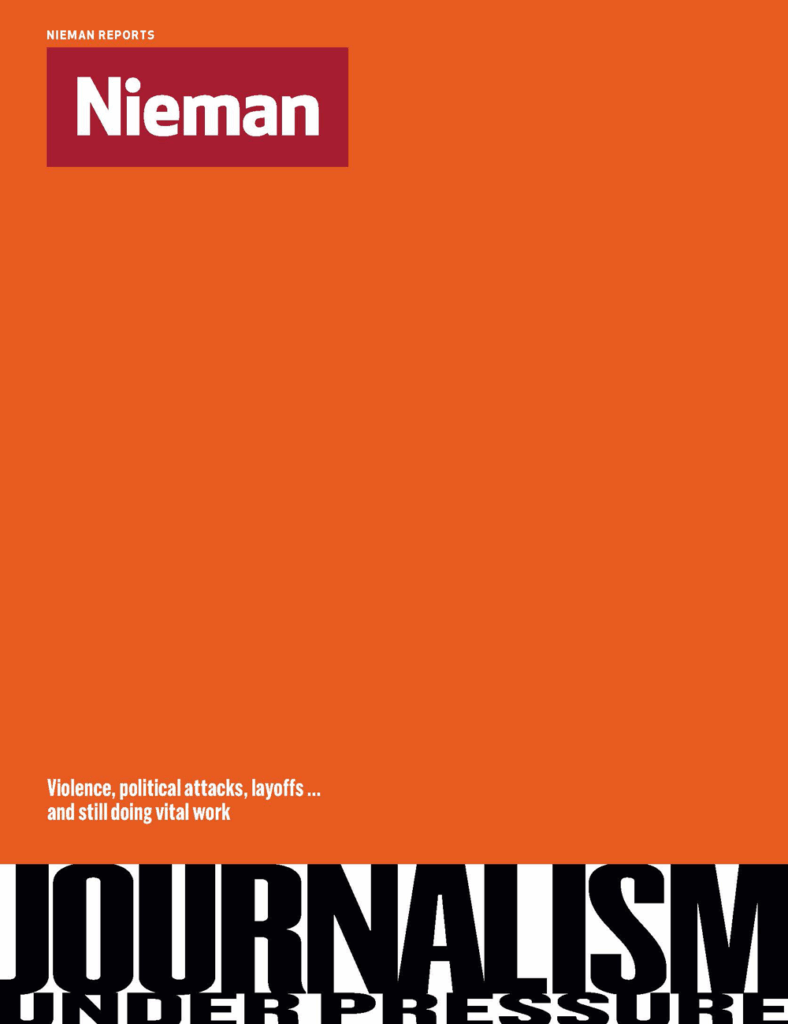In an essay first published in 1999 that graces his collection “Things That Matter” (2013), the late Charles Krauthammer answered a question posed by Time magazine: Who was the most important person in the twentieth century? Time selected Albert Einstein; Krauthammer insisted upon Winston Churchill. “Without Churchill,” he wrote, “the world today would be unrecognizable—dark, impoverished, tortured.”
If we change the question, asking instead what was the most important profession in the last century, a good case could be made for journalism. Without it, large swaths of the world similarly might have remained “dark, impoverished, tortured,” because few people would have been aware of the nature and depth of the atrocities therein. You can’t fix what you can’t find. Indeed, we have only to look at places today where journalists must risk their lives to do their jobs—places such as Central Europe, the Philippines, Mexico, Myanmar, Russia, Turkey, and too many others—to appreciate anew what an incalculable difference the press made in the twentieth century, reporting on wars, famines, genocide, and the tyrants who green-lighted them.
But saving the world apparently wasn’t enough. Journalism finds itself in deep trouble these days. It faces a profound reckoning, a hinge point of existential significance.
“I fear for our profession. It’s standing on wobbly legs,” declares Alex Kotlowitz, an author and journalist who teaches at Northwestern University’s Medill School of Journalism. “I don’t know how a democracy survives without a robust press.”
On a single recent day—January 23—more than a thousand media jobs in the United States were eliminated when organizations such as BuzzFeed, Yahoo, HuffPost, and Gannett announced deep staff cuts. Earlier, web sites such as Mic and Mashable, once deemed promising, were, in effect, sold for parts. Layoffs have already roiled digital media companies Refinery29 and Vox. And those are national platforms; the loss is even more acute at the local level, where approximately 20 percent of smaller U.S. newspapers have vanished since 2004, according to Jeremy Littau in a recent essay in Slate. “If you think there’s corruption in Washington, D.C.,” Littau warned in his piece, “what’s happening at City Hall is often worse—and in more and more places, there’s no longer anyone paid to root it out.” As if to prove Littau’s point, on February 1, McClatchy Company, owner of the Miami Herald, The Charlotte Observer, and 27 other daily newspapers, notified employees that it will be offering 10 percent of its workforce voluntary buyouts. (You are free to add your own quotation marks around the word “voluntary.”)
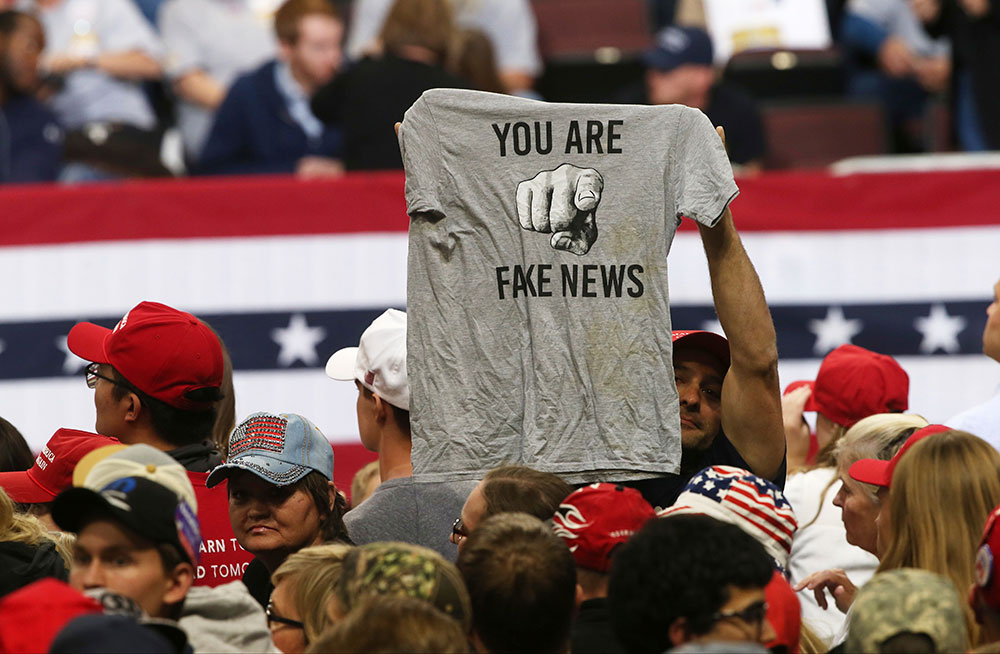
James Warren, executive editor of NewsGuard, a startup that assesses the veracity of news sites, and former managing editor of the Chicago Tribune, is also concerned about the loss of hometown coverage. “You have to think local, local, local,” he says. “All the great national coverage by The New York Times and The Washington Post aside, what about state capitals and both state and local government agencies? What’s tragic is that the once fairly systematic coverage on a local level has quietly disappeared and nobody is yelling about it.”
Around the world and around the corner, then, the press is flailing. It is burdened by a rickety business model whose obsolescence seems inevitable in the wake of technological disruptions. It is bludgeoned by the constant rhetorical assaults of President Trump, whose anti-media tweets and taunts have sanctioned the notion that journalists are jealous, sneaky, agenda-driven purveyors of something called “fake news.” And—in what is perhaps the cruelest blow of all—many polls indicate that the very people journalism is intended to serve aren’t all that crazy about it, anyway.
The problem with trying to solve the mystery of who killed—or at least gravely wounded—American journalism is this: Everybody already knows the answer. Like a mediocre whodunit, the villain is obvious, the weapon a no-brainer. The true culprit? Why, it must be Mark Zuckerberg, founder of Facebook, or one of those smart guys over at Google, who pulled off a daring daylight heist of the advertising dollars that formerly supported newsgathering organizations, or Craig Newmark, founder of Craigslist, who purloined all of those lovely, lucrative classified ads from newspapers. Isn’t that right? Or perhaps the genuine bad guys are Shane Smith and Jonah Peretti, respective kingpins of Vice and BuzzFeed, the smug, upstart media mavens who dangle shiny content before readers’ eyes—think of those bright, jangly mobiles that doting parents suspend above a baby’s crib—having realized that our attention spans have shrunk to a nub.
The problem with trying to solve the mystery of who killed—or at least gravely wounded—American journalism is this: Everybody already knows the answer
The detective work continues. Essays exploring the reasons for journalism’s demise have begun tumbling out with some regularity of late from august cultural arbiters such as The New Yorker and The New York Times. Newly published books by editors who led key newsrooms, such as “Merchants of Truth: The Business of News and the Fight for Facts” by former Times editor Jill Abramson and “Breaking News: The Remaking of Journalism and Why It Matters Now” by former Guardian editor Alan Rusbridger, have piled on the gloom like dirt on a coffin. In an otherwise thoughtful and incisive essay in Tablet magazine about journalism’s troubles that serves as a review of the Abramson book, Sean Cooper cracks the case in his very first sentence, with a self-assurance that would do Hercule Poirot proud: “The sensational implosion of the 20th-century American press was precipitated by a combination of hubris and negligence.” There you go. Mystery solved!
None of these theories tells the whole story. For one thing, the corpse won’t stay dead: Again and again, just when the dire reports from journalism’s front lines seem to be reaching critical mass, something wonderful happens. Up springs a story or a series or a profile or a podcast that astonishes, that sparkles, that upends what people thought they knew. We live in a golden age of nonfiction storytelling, an era when the depth, variety, eloquence, and relevance of the work being created has rarely if ever been surpassed.
Which brings us back to the central paradox of contemporary journalism: The product, in the main, is superb. Word-based wonders abound. Scintillating stories proliferate. New methods of storytelling and pioneering partnerships between for-profit and nonprofit media organizations are increasing. And yet this excellence comes as a truly effective, long-term funding model—the means by which the marvels will be paid for—remains elusive. What Virginia Woolf knew back in 1928 is still true in 2019: “A woman must have money and a room of her own if she is to write fiction … The lamp in the spine does not light on beef and prunes.” Change the woman to women and men, the fiction to fact, and the beef and prunes to ramen noodles and Clif bars, and the lesson still adheres: Writers need sustenance. Organizations need capital.
Thus for every cheery report of an innovative new wrinkle such as ProPublica or Emerson Collective or the giddy rise of podcasts, and for every billionaire willing to pony up to save a newspaper, there is a scowling naysayer with a pen and a clipboard standing close by, checking off the names of media outlets that have gone bust or downsized so dramatically that the company directory can now be expressed as a haiku.
The juxtaposition of humiliation and triumph can be jarring. And so even as Trump tweets his all-caps smackdowns, and even as more and more journalists find themselves reliant upon wealthy benefactors like bowing sonneteers of the Elizabethan age, there is this: Time’s 2018 Person of the Year was a journalist— amalgam of the brave and eloquent people who gave their lives, as Karl Vick put it in the cover story, to “dare to describe what’s going on in front of them,” including Saudi writer Jamal Khashoggi, murdered for his columns that called out his homeland’s leadership for its oppressive ways, and the five employees of the Capital in Annapolis, Maryland, killed by a reader who stormed the newspaper’s office with a grudge and a gun.
Time’s roll call of noble journalists is inspiring. However: Not to be the spider on the valentine, but the median wage for a newspaper reporter in 2017, according to the Pew Research Center, was $34,000.

As paradoxes go, it’s a perverse one. Journalism—the product itself, the words and the pictures and the sounds—is thriving, in many cases. But journalists are digging between the couch cushions for nickels and quarters for bus fare to get to work. (If they still have work, that is.) And news organizations are struggling to remain solvent. At the end of 2015, when Rusbridger left the editor’s chair at The Guardian, the media world faced a moment of “great journalistic achievement and empty coffers,” according to James Meek in his review of Rusbridger’s book in the London Review of Books, a succinct description that sadly is still relevant today: The product is superior, but the reward for producing it is nothing to write home about.
It is the spectacle of those empty coffers that haunts NewsGuard’s Warren: “The primary question remains the economic one—how do you support quality journalism if the primary means of revenue, advertising, is continuing to go to Facebook and Google? It is dubious whether nonprofit models will be sustainable on any widespread basis and it is very unclear whether people will pay for quality content.
“What we don’t know,” continues Warren, who, among his other challenges, had the headache of being my boss at the Tribune, “is if some of the ‘hot’ digital startups like Vox, Vice, BuzzFeed, or the Huffington Post will be around in three or four years.”
According to the Bureau of Labor Statistics’ Occupational Employment Statistics, cited by the Pew Research Center, jobs at newspapers—the slots for writers and editors and photographers—fell 15 percent between 2014 and 2017. Since 2004, they have dropped 45 percent.
It’s hard to fault media bosses for the staff diaspora. They are, after all, like McDonald’s managers: When the customers aren’t thronging the counter, you have to send the hamburger-makers home. Estimated daily circulation for U.S. newspapers declined 11 percent between 2016 and 2017.
But not everyone agrees that journalism is on its last legs.
“I am congenitally optimistic, so take what I say with a grain of salt—but I’m not convinced that the things we are experiencing are different in kind from what we’ve survived before,” says Katherine Mangu-Ward, editor of Reason magazine, in an interview.
We live in a golden age of nonfiction storytelling, an era when the depth, variety, eloquence, and relevance of the work being created has rarely if ever been surpassed
In a refreshingly contrarian op-ed published in the November 18, 2018, edition of The New York Times, Mangu-Ward called the recent dustup between Trump’s press-pummeling White House and CNN reporter Jim Acosta a minor sideshow, not a Maginot Line for freedom of expression. “Definitely, there is a shaking-out in journalism,” she concedes in the same conversation. “There’s a lot of fuss made about damage to crucial institutions. But institutions evolve. At this moment, I don’t fear that the press will cease to exist somehow in its current form.”
Jack Shafer, veteran press gadfly and senior media writer for Politico, also takes issue with the angst-ridden narrative that emanates from many media-watchers: “What the sky-is-falling types never acknowledge is that the opportunity cost of doing quality journalism has never been lower,” he says in an interview. “I would rather be a reader in 2019 than in any year you could choose.”
In many ways, it is indeed a sweet time for storytellers. Reporters can do their work anywhere. Records can be accessed with an ease undreamt of by an earlier generation forced to hang out amidst musty archives stored in courthouse basements, paging through dusty page after dusty page, inhaling sour lungfuls of atomized mouse droppings. There is, moreover, a sprightly nimbleness to the contemporary media world. One of my favorite magazines, The Weekly Standard, ceased publication in late 2018, but it was, in effect, swiftly reborn as The Bulwark, a site where you can find the work of the Standard’s top writers and editors. Not since eighteenth-century London, perhaps, when newspapers and journals came and went with the speed of a bon mot tossed off by Samuel Johnson, could publications fizzle and revive like this, without a lot of fuss and folderol, just an intense passion for words and ideas.
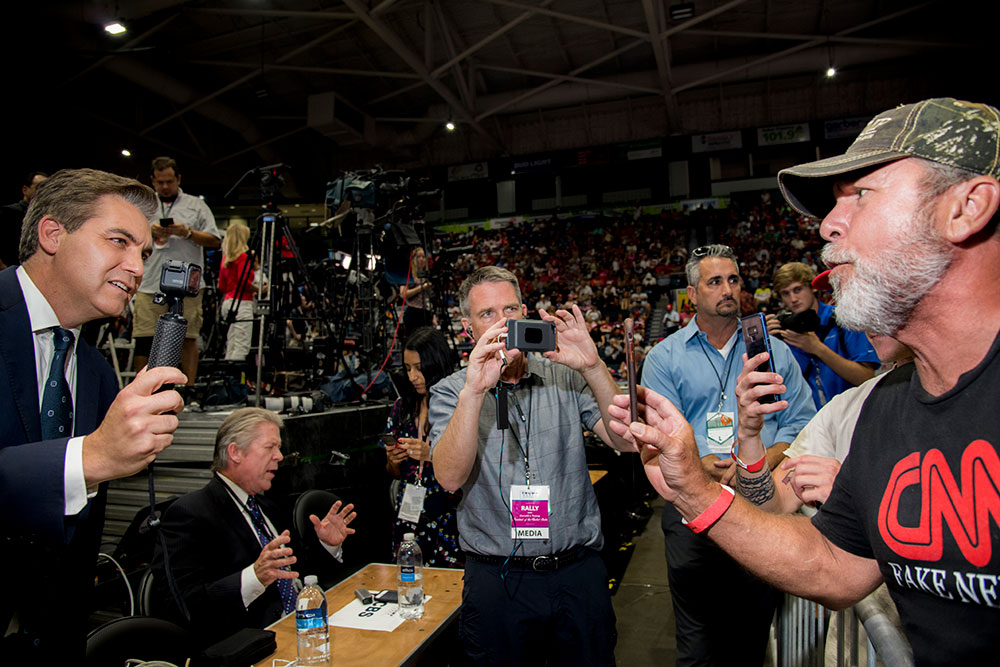
Other sorts of transformations are less bracing than they are bittersweet. A wistful illustration of the new world order in media came in a December 25, 2018 essay on TheAtlantic.com by Austin Murphy, 57, who spent more than half his life—33 years—as a staff writer for Sports Illustrated. I remember his work well: the revelatory profiles of athletes, the knowledgeable accounts of single crucial games. There was a special quality to his prose, a freshness, a crisp lucidity. As I read his stories, I was always sure that if I ever met him, he’d have a twinkle in his eye.
These days, Murphy is twinkling not for SI but for Amazon: He delivers packages in the vicinity of his California home for the online Ozymandias. His essay, though, is not a plea for pity. It’s a lesson in perspective: “Lurching west in stop-and-go traffic on I-80 that morning, bound for Berkeley and a day of delivering in the rain, I had a low moment, dwelling on how far I’d come down in the world. Then I snapped out of it. I haven’t come down in the world. What’s come down in the world is the business model that sustained Time Inc. for decades. I’m pretty much the same writer, the same guy.”
As charming and affable as Murphy’s essay is, there’s a note of sadness tucked in there, too—not for him, but for us. He might be a crackerjack delivery person, but he’s an even better writer. I’d rather read his take on Urban Meyer, the recently retired head football coach at my alma mater, Ohio State, than have him ring my doorbell and drop off that copy of “The Anatomy of Melancholy” I just ordered. Meyer says he won’t ever coach again but I don’t believe him, and neither does anybody else, and we need a good reporter—we need Murphy—to give us the skinny.
Journalism is thriving, in many cases. But journalists are digging between the couch cushions for nickels and quarters
The humbling of the Time Inc. empire was unfortunate, but not every large, important media company has suffered the same fate, thanks to the largesse of wealthy individuals—a bit of a mixed blessing, Warren believes.
“We have boutique journalism on niche subjects that is wonderfully supported by wealthy individual patrons who truly care about journalism. Those efforts have been very positive,” he says. “But what happens when these billionaires lose interest? Or when they are gone and their heirs do not have that interest?”
Among the new generation of media patrons are Amazon founder Jeff Bezos, who bought The Washington Post in 2013, and Patrick Soon-Shiong, the billionaire surgeon and biotech entrepreneur who purchased the Los Angeles Times and a handful of other California papers in June of 2018. Laurene Powell Jobs, widow of Apple impresario Steve Jobs, founded Emerson Collective as a rubric under which she buys media companies. Her portfolio thus far includes a majority stake in The Atlantic, and investments in a variety of documentary production companies and nonprofit media entities such as ProPublica and The Marshall Project.
Indeed, some of the best journalism produced today comes from just such partnerships, just such cobbled-together projects for which participants pool creativity and initiative and resources. The New York Times often teams up with the PBS program“Frontline” and ProPublica. National Public Radio, too, has been known to join forces with“Frontline.”
The nonprofit model—aided by generous donations from civic-minded benefactors—is a dynamic one, enabling the rise of online-only news organizations such as The Texas Tribune, founded in 2009, and MinnPost, founded in 2007, which covers Minnesota. Mangu-Ward’s Reason, like Mother Jones, functions as a 501(c) (3) nonprofit.
But for many small local news organizations, print and broadcast, the kind stocked with scrappy, intrepid reporters who keep a close eye on, say, how local tax dollars are spent and what local elected officials are up to, the financial situation continues to be dismal. In mid-January, for instance, the East Bay Express, a plucky alternative paper known for its investigations and arts coverage in the Oakland, California area for four decades, announced that it was laying off most of its staff.
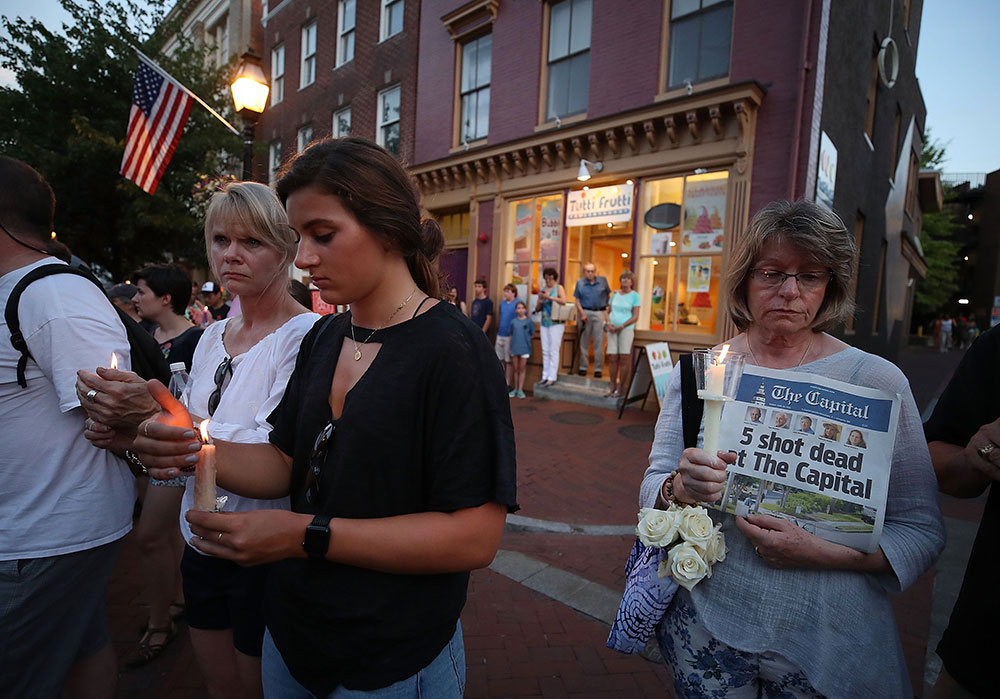
Help has come from programs such as Report for America, a nonprofit endeavor that sends reporters into places where press coverage has slacked off, and that bills itself as a combination of “AmeriCorps, Teach for America, the Peace Corps and the nation’s best nonprofit news organizations.” A similar effort is under way in Great Britain, where an entity called the Local News Partnership recently was launched. There, citizens pay a license fee that funds the BBC. Beginning last year, part of that fee goes to newspapers in small towns, enabling them to hire more reporters.
But is tin-cup journalism—which has turned a once-dignified profession into a permanent GoFundMe page—really the answer? If a media organization can’t make it as a bona fide business, does it deserve to survive? How long is long enough to subsidize a faltering news operation?
Shafer, whose Politico columns reveal an affinity for puncturing journalistic pomposity, wonders the same thing. “In my own self-interest, I’d like to see more and better local coverage,” he says. “But I wonder why it is that readers don’t seem to want to pay for it.”
Sounding like a contemporary version of that eloquent misanthrope H.L. Mencken, Shafer adds, “We often blame newspaper editors for the shoddiness of the paper. But we let readers off the hook. Is there a great reader demand to know what happened at City Hall or at the sewer commission meeting? By and large, the answer is no. But no one likes to shame the reader, because it sounds elitist.”
There is a sprightly nimbleness to the contemporary media world
Matters are certainly not helped, of course, when the most powerful person in the world continues to pull out his digital pea shooter and let fly. Typical was this flurry of tweets on January 7, 2019, in which President Trump offered a familiar critique of journalists: “Many have become crazed lunatics who have given up the TRUTH! … They use non-existent sources & write stories that are total fiction … The Fake News Media in our Country is the real Opposition Party. It is truly the Enemy of the People!”
Might this playground invective do lasting damage—not only to the press but also to the nation? Or will it eventually come to seem like the pitiful ravings of a desperate, flailing man as the walls close in around him—a sort of Lear Lite?
“At this point,” says Robert Schmuhl, emeritus professor of American studies and journalism at Notre Dame and the author of several books and essays about the presidency, “we don’t know whether Donald Trump is an anomaly or an augury.”
In his forthcoming book, “The Glory and the Burden: The American Presidency From FDR to Trump,” Schmuhl uses a chapter to explore the historically fraught relationship between the country’s CEOs and their bothersome Boswells. “Presidents since Washington have complained—sometimes in salty and unrestrained terms—about news coverage,” he points out. “Much of the time, though, they expressed that criticism behind closed doors.” It’s different now, as other sources of power have become available. Hannibal had his elephants—and Trump has his Twitter account.
“He’s using dangerous language,” warns Jacqui Banaszynski, emeritus professor at the University of Missouri’s School of Journalism and editor of Nieman Storyboard. “The same words are used in countries with authoritarian regimes.”
Is tin-cup journalism—which has turned a once-dignified profession into a permanent GoFundMe page—really the answer?
Mangu-Ward, however, continues to be skeptical of the notion that contemporary journalism can be summarized as a cage match between Trump and, say, CNN. “We’ve had a lot of practice runs at full-fledged hysteria about how Trump’s tweets will be the end of the press as we know it,” she says. Such anxiety is “part of the culture wars. Only people on the left are asking about the future of journalism. People on the right don’t ask that. The left sees the press as part of their team. So they’re worried about members of their team.”
Owen Youngman, who has held the Knight Chair in Digital Media Strategy at Northwestern since 2009, also is reluctant to regard Trump’s tweets, as unfair and juvenile as they might be, as a sui generis assault on media. “I read Robert Caro and it doesn’t seem like LBJ liked the press all that much, either,” he says. “How many mayors of New York were happy with Jimmy Breslin?”
Undeniably, Trump sometimes has a point. There is such a thing as fake news. In late 2018, Der Spiegel reporter Claas Relotius, a seven-year veteran of the paper based in Hamburg, Germany, confessed to having made up dozens of stories. As Ulrich Fichtner stated in a Dec. 20, 2018, Der Spiegel report on the epic fraud: “Inventions. Lies. Quotes, places, scenes, characters: All fake.” Previous fabulists have become quasi-household names: Jayson Blair, Stephen Glass, Patricia Smith, Janet Cooke. The publications they besmirched with their serial fibs are, respectively, The New York Times, The New Republic, The Boston Globe, and The Washington Post. (For a poignant but clear-eyed essay about what it’s like to find out that a journalistic colleague has been making it all up, read the 2014 piece by Hanna Rosin on the Glass case, “Hello, My Name is Stephen Glass, and I’m Sorry,” published in The New Republic.)
Admittedly, that’s not what Trump really means by “fake news.” He means stories that he doesn’t like. Yet the fact that news organizations have, by and large, always been willing to admit their mistakes—quickly, publicly, and thoroughly—is admirable, and furthermore distinguishes them from their chief antagonist.
So as the tabula rasa of 2019 looms before us—whither journalism?
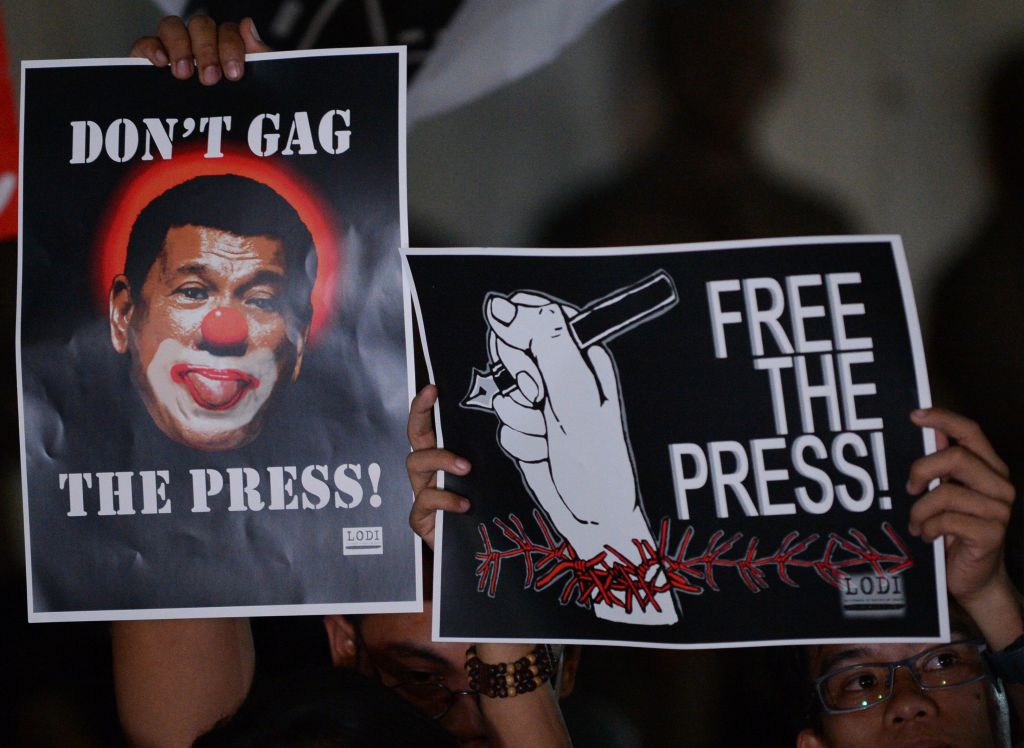
Will we continue to see creative and investigative riches delivered by an evolving business model? (“Evolving” is a polite euphemism for “nobody knows what the hell to do and so everybody’s trying everything under the sun.”)
Jim Kirk, former editor of the Los Angeles Times and the Chicago Sun-Times who now runs Crain’s Chicago Business, says that he is optimistic that the funding conundrum will eventually be solved: “It’s not just advertising anymore. There’s a continued search for revenue streams outside of the traditional to sustain the journalism that we know is important. You have to be very aggressive about that.” But it won’t be easy, he acknowledges. “Right now, we’re in this long gray period.”
In “The Blue of Distance,” a luminous essay from her collection “A Field Guide to Getting Lost” (2005), Rebecca Solnit describes the process by which chrysalises turn into butterflies: “The process of transformation consists mostly of decay and then of this crisis when emergence from what came before must be total and abrupt.
“The strange resonant word instar describes the stage between two successive molts, for as it grows, a caterpillar … splits its skin again and again, each stage an instar,” she continues. “It remains a caterpillar as it goes through these molts, but no longer one in the same skin. There are rituals marking such splits, graduations, indoctrinations, ceremonies of change, though most changes proceed without such clear and encouraging recognition. Instar implies something both celestial and ingrown, something heavenly and disastrous, and perhaps change is commonly like that, a buried star, oscillating between near and far.”
Journalism’s fate is poised somewhere between “heavenly and disastrous,” in Solnit’s phrase, as its practitioners grapple with challenges unique to the present moment—the petty but ultimately perishable insults doled out by @realDonaldTrump—and other challenges that are as old as the first abacus: making the arithmetic work. Right now, it doesn’t. Not even for the all-digital media organizations, once touted as the hip, savvy saviors of the news business.
So as the tabula rasa of 2019 looms before us—whither journalism?
Yet we muddle on through the darkness. Or perhaps we muddle on because of the darkness; you don’t know what you truly value until you are forced to contemplate its absence. The positive news is that superb journalistic work is still being created—it’s right there at our fingertips every minute, delivered via page, screen, and earbud—in the midst of this catastrophic revolution in how media is produced, financed, distributed, and accessed. Imagine how bleak it would be to have the opposite problem: a sound economic model but a crisis of content. Rich, thriving media organizations—and meh stories. The trick lies in finding a large enough audience for these literary miracles, and in something more prosaic still: paying the bills. It’s a scary time, but it’s also an exhilarating one.
Journalists, welcome to your instar.

